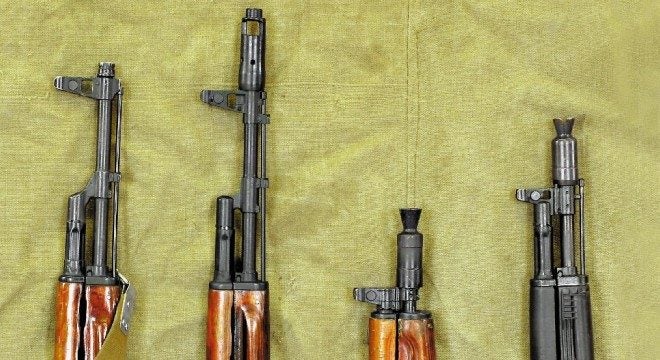In this article, we’ll discuss the history, development and evolution of muzzle devices seen on Mikhail Kalashnikov’s Avtomat. In particular, we’ll talk about those made in the Soviet Union and Russia. Just like in the case of one of our previous installments dedicated to the history of Soviet/Russian AK bayonets, this article is also primarily based on Kalashnikov Gun Magazine‘s content which we use with the permission of KGM’s chief editor. Without further ado let’s see how the AK muzzle devices developed over the years.
AK-47 Thread Protector
Have you ever thought why AK-47s had threaded barrels from the very beginning of their mass production if the first actual muzzle device, the slant compensator, was introduced with the AKM ten years later from the start of the AK-47 production? The threaded muzzle with a left-hand metric thread pitch of 14×1 L has always been present on the AK-47 rifles and the reason is that they were planning to build a variety of muzzle attached devices such as a firing port adapter to be used in APCs, curved barrel attachments and rifle grenade launchers. To my knowledge, none of these devices entered the service, but that is the reason why the AK muzzles were threaded from the very beginning.

And of course, if you have a threaded barrel and no actual muzzle device, you need to have a thread protector. In 1960 they made a second version of the thread protector which compared to the first one has an additional cannelure which is reportedly cut to decrease the weight of the thread protector. Both versions of the thread protector have four cuts at the base for the muzzle device retainer as well as flat surfaces to fit a wrench.
AKM Slant Compensator
I don’t know why and how, but this muzzle device is more often referred to as “slant brake”. In reality, it is not a muzzle brake – it does not mitigate the recoil. It is a muzzle rise compensator. Gasses exiting the muzzle get deflected from the protruding bottom surface pushing the muzzle down and left thus countering the tendency of the muzzle to climb up and right upon firing.

According to KGM, there are three versions of slant comps. The first one (far left one on the above-embedded drawing) has a slight shelf behind the extended circular base. Later, they deleted that feature on the second version. The third pattern slant comp (the far right one) lacks the wrench flats seen on the previous two versions. This simplified third and final iteration of the slant compensator was produced up until 1977.
One of the KGM articles points out an interesting fact. Apparently, the RPK LMGs were always issued with a thread protector only. However, those RPKs that were supplied to the National People’s Army of the German Democratic Republic were equipped with slant comps. Reportedly, this was the requirement of Germans.

Another interesting side note is that in Soviet/Russian army, soldiers usually gave/give nicknames to the gear and equipment pieces. Normally, it is either something descriptive to the item or sounds similar to its model designation. That’s why you can often see the slant comp referred to as the “whistle” (свисток) … because it kind of looks like one.
AKML Flash Hider
The versions of AKM and AKMS (S indicates the folding stock) rifles as well as RPK and RPKS (yes, there was an RPK with a side folding stock) LMGs that were supposed to be used with NSP-3 night vision scopes had the Cyrillic letter L (Л) at the end of their model designation thus becoming AKML, AKMSL, RPKL, RPKSL. These guns were equipped with large birdcage style flash hiders designed to prevent damaging the sensitive night vision scope with the flash coming out of the muzzle.

These flash hiders had five notches at the base to allow proper orientation on the muzzle. The length of this flash hider made it impossible to attach a bayonet to the rifle. These AK muzzle devices were “permanently” issued to any particular rifle/LMG and had the last three digits of the weapon’s serial number engraved on them. Apparently, these flash hiders have two versions with the only difference being the slightly rounded edges of one of them.

AKML flash hider compared to a slant comp
RPK Flash Hider
With the transition to the 5.45x39mm caliber, the then-new AK-74 rifles had a new (24×1.5 metric) thread pitch on the muzzle, however, the RPK-74 retained the 14x1L muzzle thread pitch. Unlike the 7.62x39mm RPKs which came with thread protectors only, the 5.45x39mm RPK-74 was issued with a new birdcage style flash suppressor. Sounds like a recipe to an accident, doesn’t it? Theoretically, the RPK-74 flash hider can be accidentally attached to a 7.62mm RPK muzzle and get destroyed upon firing.

In 1985, the RPK-74 flash hider was slightly simplified by decreasing the diameter of the base circle to the diameter of the flash hider itself. All versions of RPK flash hiders have five fixation notches. The early versions of the RPK flash hiders were thinner and could be damaged if the gun was dropped on a solid surface. That’s why they later came up with a much thicker-walled version.
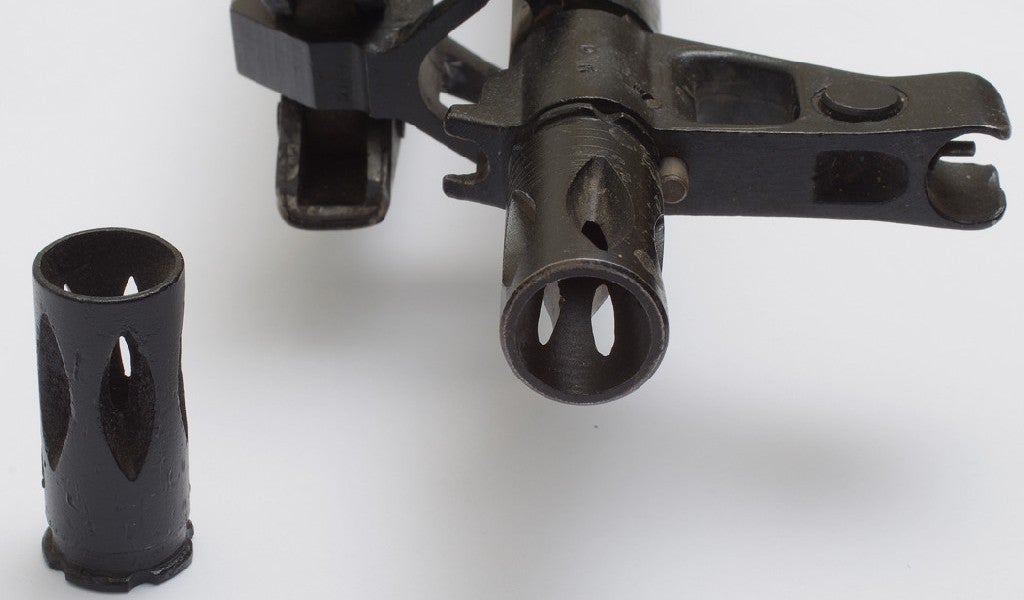
The reinforced version is mounted to the gun. Note how thick its walls are compared to the earlier version on the left.
In the early ’90s, with the introduction of 200-series RPKs, two versions of this flash hiders were introduced. One of them was identical to the RPK-74 flash hider and was used with the 5.45x39mm RPK-74M and the 5.56x45mm RPK-201. The second version has external dimensions identical to other RPK flash hiders but has a larger bullet hole to be used with AK-203 LMGs chambered in 7.62x39mm.
AK-74 Muzzle Brake
As mentioned above, on the 5.45mm AK-74 rifles the muzzle thread pattern was changed from 14x1L to 24×1.5. The new AK-74 rifles were also equipped with a rather large two-chamber muzzle brake/compensator. Interestingly, the prototypes of the AK-74 initially had 22mm threads but they later enlarged it to 24mm to increase the volume of the first closed chamber.
There are three holes (facing upwards and sideways) drilled into the first chamber which are meant to counter the muzzle rise. The second, open chamber of this muzzle device is designed to divert the gasses sideways thus mitigating the felt recoil. It should also contribute to the muzzle rise compensation because the top strap is narrower than the bottom one. At the very end of this muzzle brake, there is an extension that allows mounting the bayonet.
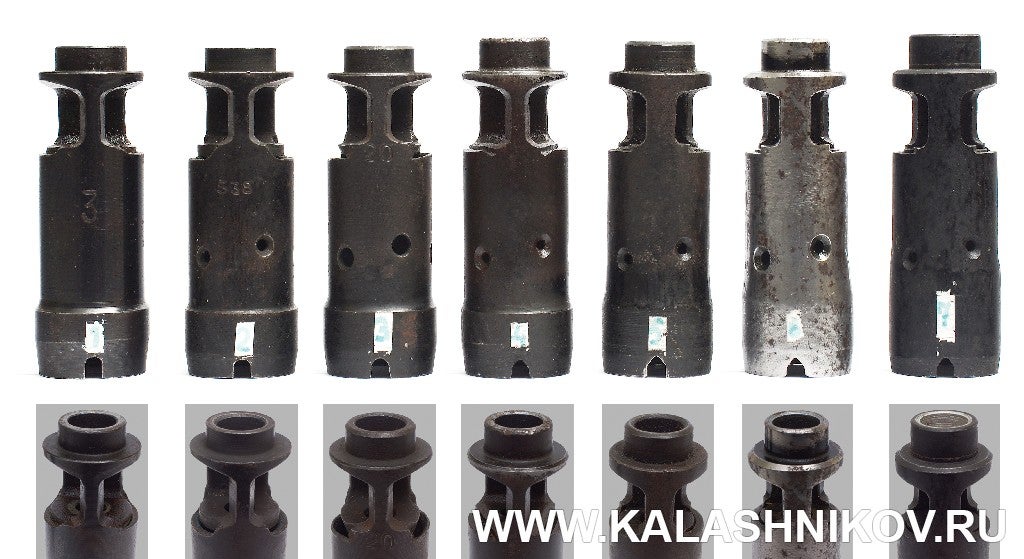
The very first versions (see the drawing below) of the AK-74 muzzle devices were machined out of a solid bar of steel. They have a distinctive crescent-shaped slots that vent the gasses forward from the first chamber. This type of muzzle brakes was made in IzhMash (Izhevsk) from 1973 to 1976 and in TOZ (Tula) from 1978-1979. The same pattern muzzle brakes made in different plants may have some minor differences. Most of this first AK-74 muzzle brakes also had a beveled base portion to make it easier to get access to the muzzle device detent.

First pattern “crescent” AK-74 brakes
Second pattern AK-74 brakes can be distinguished by the zigzag slots that vent the gasses forward from the first chamber. This type of brakes was also made both in Izhevsk (1977-1983) and in Tula (1980-1981). Interestingly, Tula brakes have a longer (by 2mm) bayonet mount portion (see the image below). There is also a version with a cannelure machined at its base portion but its dates of manufacturing are unknown.

Second pattern zigzag (a.k.a. Snake) brakes. Note the longer bayonet mounting extension on the bottom Tula brake.
Next versions of AK-74 muzzle devices were designed to be simpler to manufacture. They used cold hammer forging to make the body of these AK muzzle brakes then machined the front open chamber and pressed a washer into the body of the brake to form the wall between the chambers. The washers have flat edges which form the front vent slots of the first chamber. These brakes are usually referred to as “washers” (шайба).

The simplified “washer” brake
This simplified version was manufactured from 1984 to 1990 when it was slightly redesigned by reinforcing its base portion. In the image below, you can see that the thicker diameter base is extended reaching the side hole of the first chamber. This last version is what was used in the 100-series of AK rifles.

The reinforced “washer” brake
AKS-74U (Krinkov) Muzzle Device
Before getting to the 100-series, let’s take a look at the AKS-74U muzzle devices. The Krinkov has a muzzle booster/flash hider with a distinctive closed single chamber and conical front flash hider portion. The muzzle thread pitch on AKS-74U is identical to that of the AK-74. The Krinkov muzzle device also has notches on the conical portion to allow using a tool to make a handle and use the advantage of the leverage if the muzzle device is stuck.

First Krinkov muzzle devices were made by IzhMash and had a smooth body (the top one in the image above). Later, both Tula (1982-1986) and Izhevsk (1981-1986) plants switched to manufacturing the second pattern muzzle device (left one on the bottom row) which has a relief in the middle portion. From 1987 to 1993 the third pattern was introduced which differs from the second pattern only by the lack of the rear beveled surface.
100-series AKs
As I mentioned earlier, the latest version of the AK-74 muzzle brake was borrowed by the 100-series of AK rifles. The AK-101 (5.56x45mm) and AK-74M (5.45x39mm) have the exact same brake as the AK-74. However, the AK-103, which is chambered in 7.62x39mm, has a larger bullet hole in the brake for the larger caliber. The AK-103 brakes also have the caliber marking as shown in the image below.

Some of the 100-series muzzle brakes have an additional flat cut at the bottom portion (the right one in the image below). This was done to make the cleaning rod removal easier.
With the 100-series AKs, Russia also introduced the AK carbines (AK-102, AK-104 and AK-105). The 100-series AK carbines have barrels chopped down right next to the gas block which decreases the barrel length from 415 to 314 mm (16.3″ to 12.4″). These carbines are equipped with Krinkov-style muzzle boosters/flash hiders.
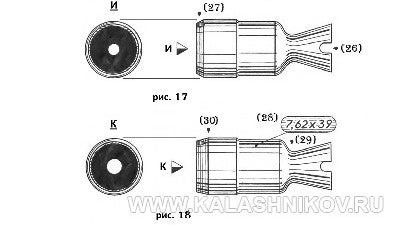
Despite being similar to the Krinkov muzzle devices, the 100-series carbine ones are shorter. The 7.62x39mm muzzle device of AK-104 also features a caliber marking and larger bullet hole.

AK-104
200-series AKs
200-series AKs are the successors of 100-series. These rifles were introduced with a new birdcage flash hider.

200-series AK flash hider
AK-12/AK-15 and AK-12K/AK-15K
The latest AK rifles that have been adopted by the Russian military are the AK-12 and AK-15. These rifles are identical with the exception of the caliber – AK-12 is chambered in 5.45x39mm and the AK-15 is chambered in 7.62x39mm. The new AK-12 and AK-15 muzzle brakes are similar to that of the AK-74 with the addition of a front crown-shaped extension. The new muzzle brakes are marked with the caliber they are made for.

AK-12 and AK-15 muzzle device
The AK-12 and AK-15 rifles not only feature a new muzzle device but also come with a new QD threadless muzzle device attachment system. These muzzle brakes are attached by sliding them over the muzzle, rotating to catch the QD lug and fixing in place via the spring-loaded plunger.
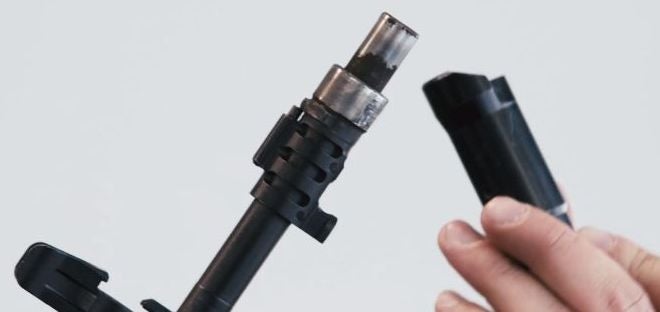
The QD mount of the AK-12/AK-15 muzzle brake
The shorter, carbine versions of these rifles have the letter K at the end of their model designation – AK-12K and AK-15K. These rifles have been spotted with flash hiders as seen below.

RPK-16 Flash Hider
RPK-16 is the latest iteration of the RPK family of light machine guns. Besides the AK-12 style improvements, it also (first time for RPKs) has a barrel change feature. The muzzle devices shown on these LMGs are cylindrical with a T slot cut into them. I assume they work as a flash hider and muzzle rise compensator.

RPK-16 flash hider
In this article I tried to stick to the intermediate caliber AKs that have been adopted by the Soviet Union or Russia. I avoided including in the main body of the article muzzle devices seen on AKs of other calibers, civilian rifles, AK-based other firearms and those that were not adopted not to make the article too complicated and confusing. However, as an appendix, if you will, I would like to mention the following experimental and non-intermediate caliber AK muzzle devices.

AK-308 flash hider
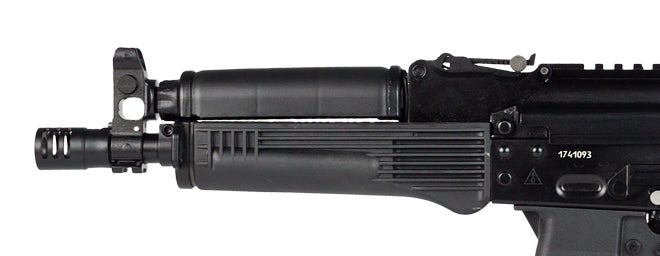
Vityaz SMG muzzle device
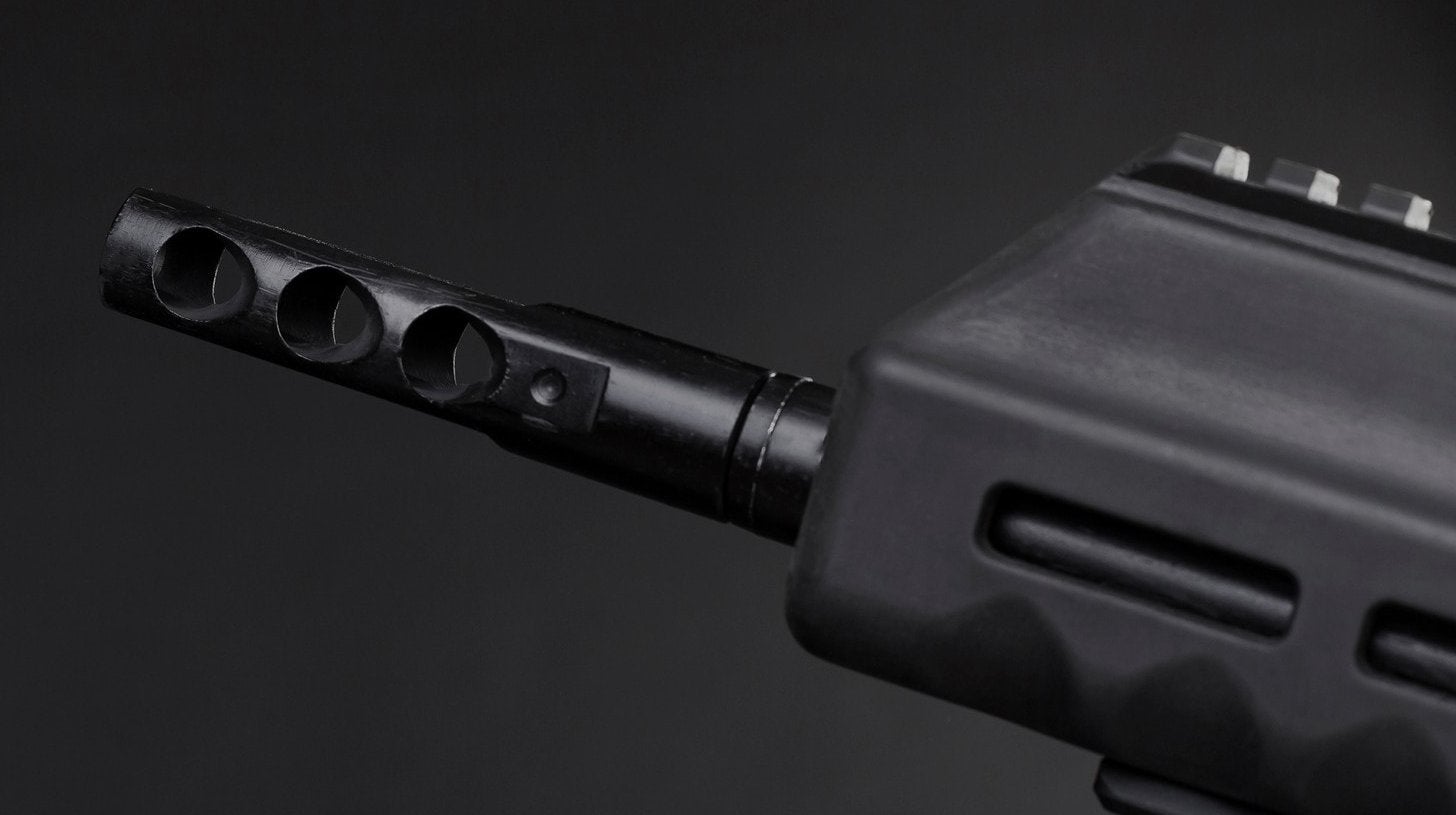
The muzzle device of SR-1 balanced action rifle

The muzzle device of the first pattern AK-12. Note that it has a first closed chamber like the AK-74 but two open chambers following it.
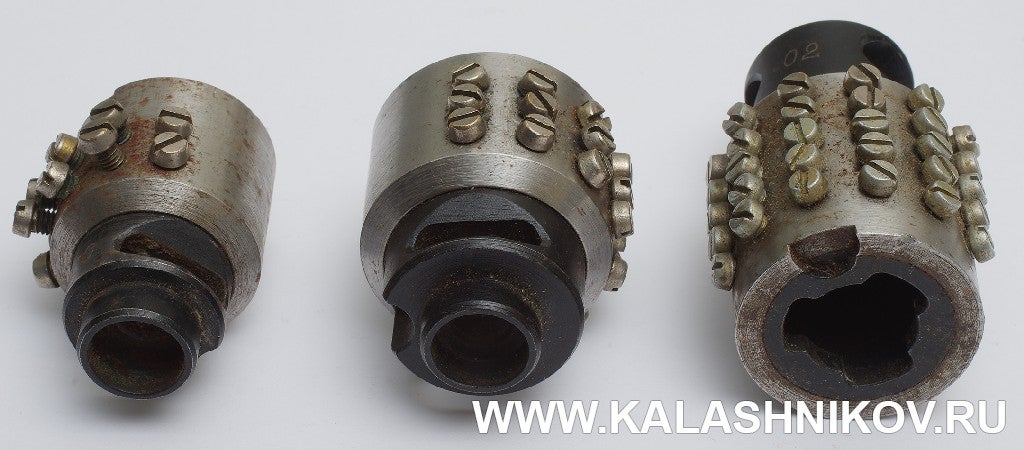
This device is designed to find out the most efficient location of the holes on the first chamber of the AK-74 pattern muzzle brakes. It has a number of holes drilled into it and plugged with screws. By opening a certain combination of holes the designers were testing the efficiency of the combinations. Note also that there is a three-lug attachment mechanism.

Experimental AK-74 muzzle brake with two drainage holes on its bottom portion
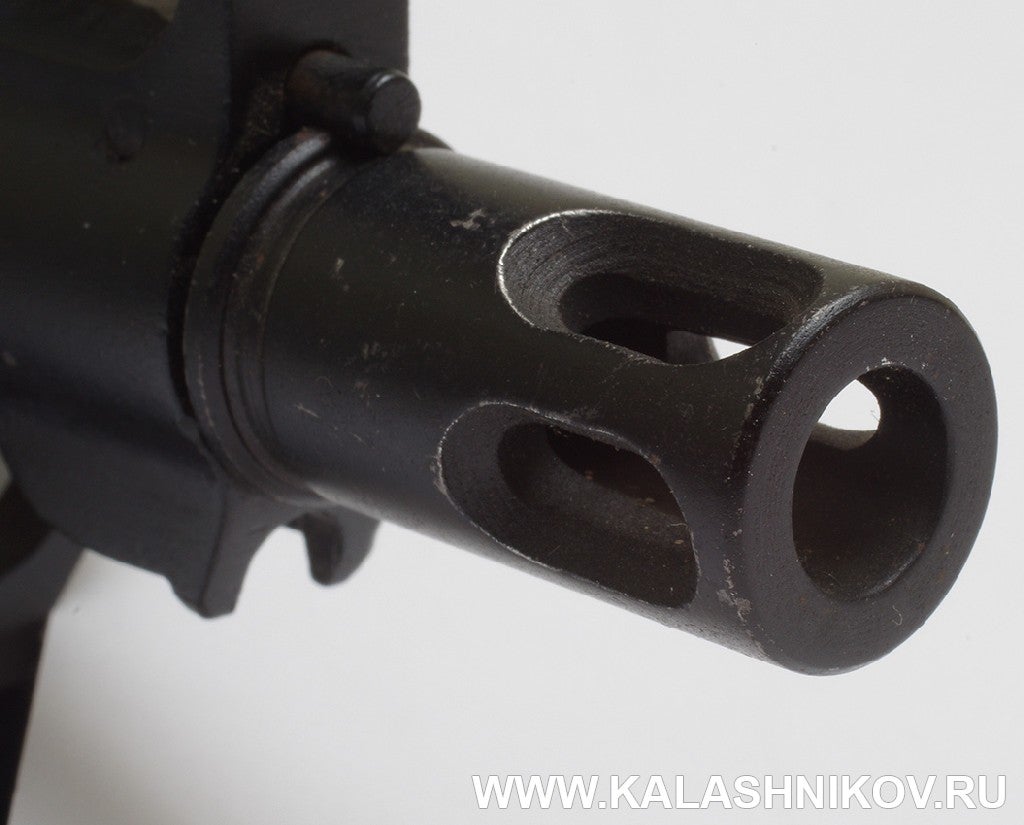
Another experimental AK muzzle brake
OK, consider this the appendix 2 where you can see a set of AK muzzle device blueprints. These are for educational purposes only. The author has no idea about how accurate these blueprints are. If you decide to use these blueprints for any application, you’ll be doing it at your own risk. Also, make sure that your actions comply with your local legislation.

AK-47 thread protector
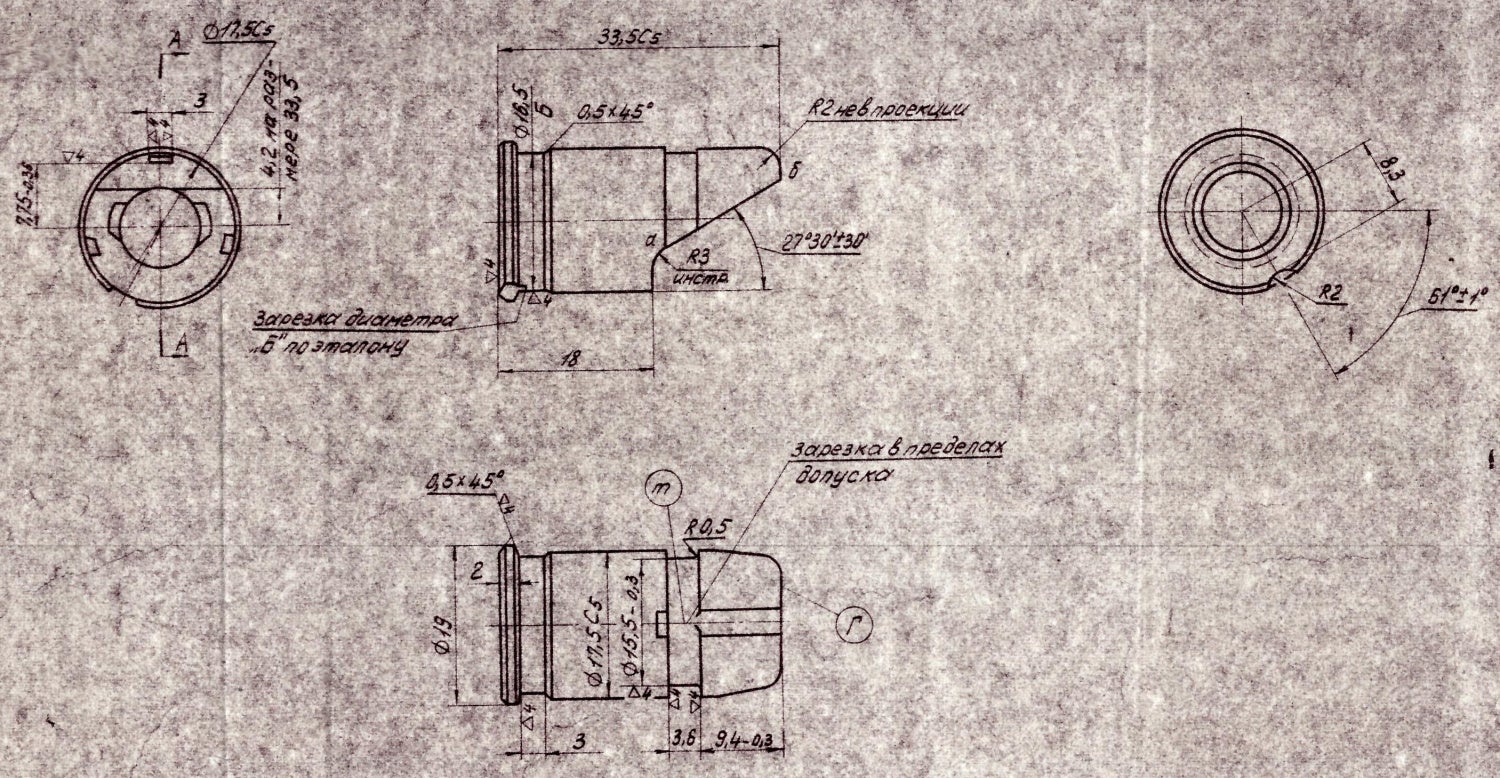
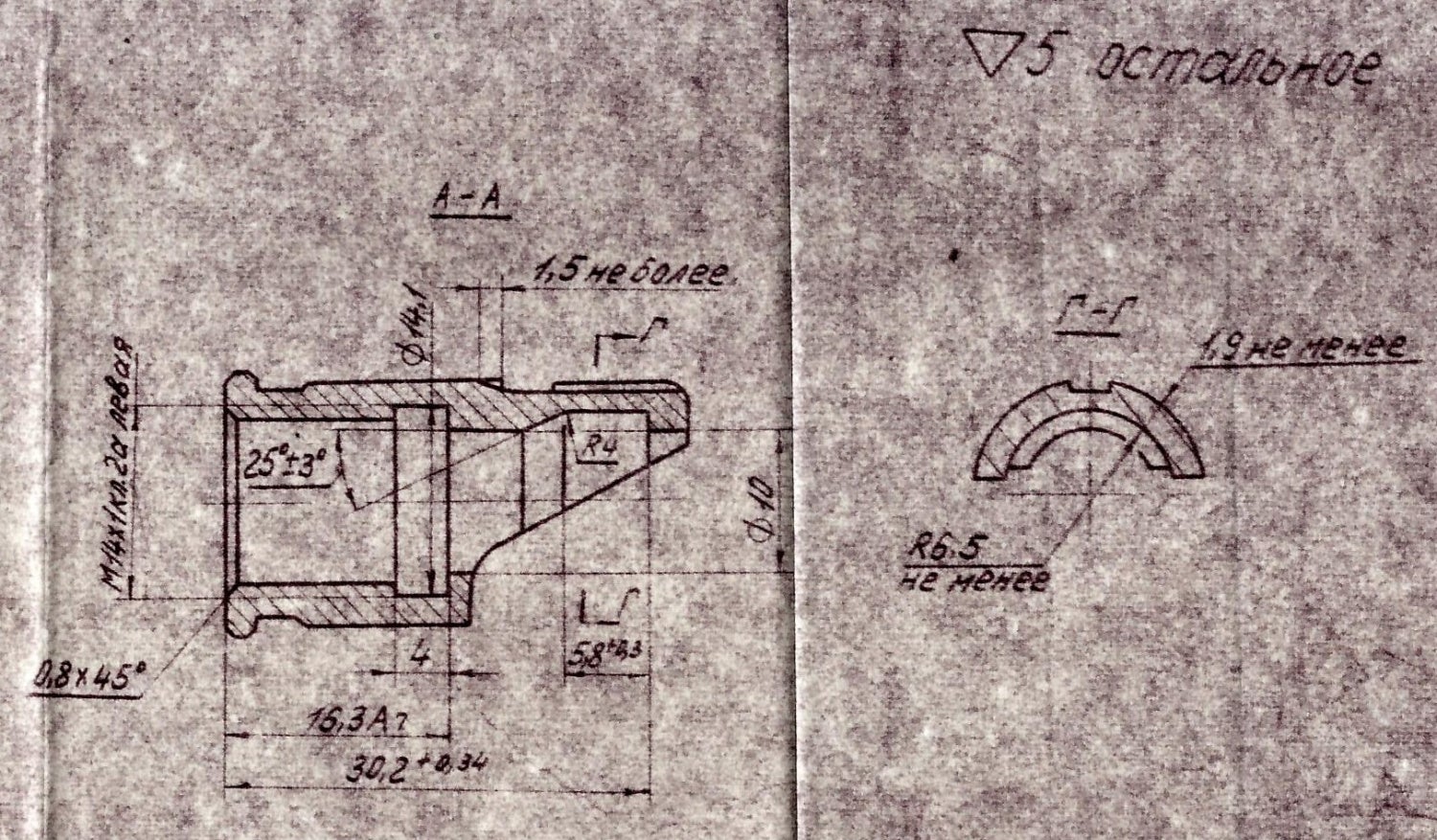
AKM slant compensator
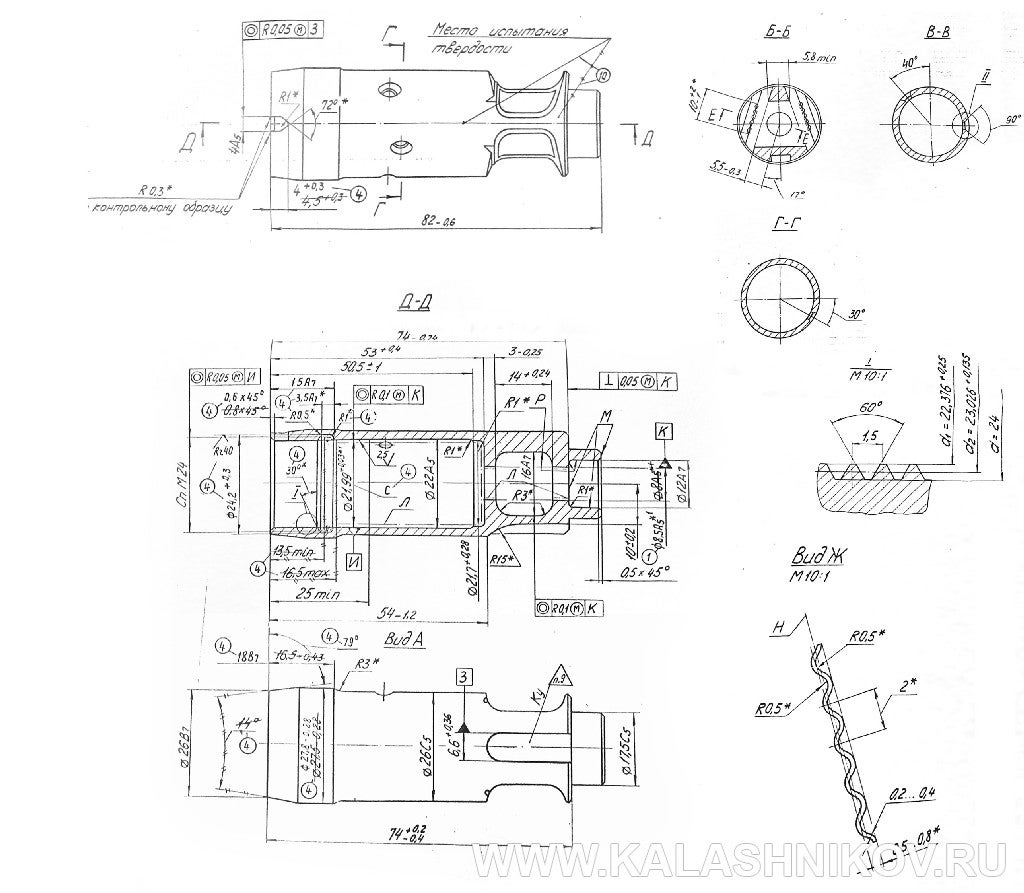
AK-74 brake

Experimental AK-74 muzzle brake with two open chambers
I hope you enjoyed this saga of AK muzzle devices. If I missed something that you think deserves to be added to the article, please let me know in the comments section or shoot me an email.
Images from www.kalashnikov.media, www.kalashnikov.ru, ak.kalashnikovgroup.ru
 Your Privacy Choices
Your Privacy Choices
